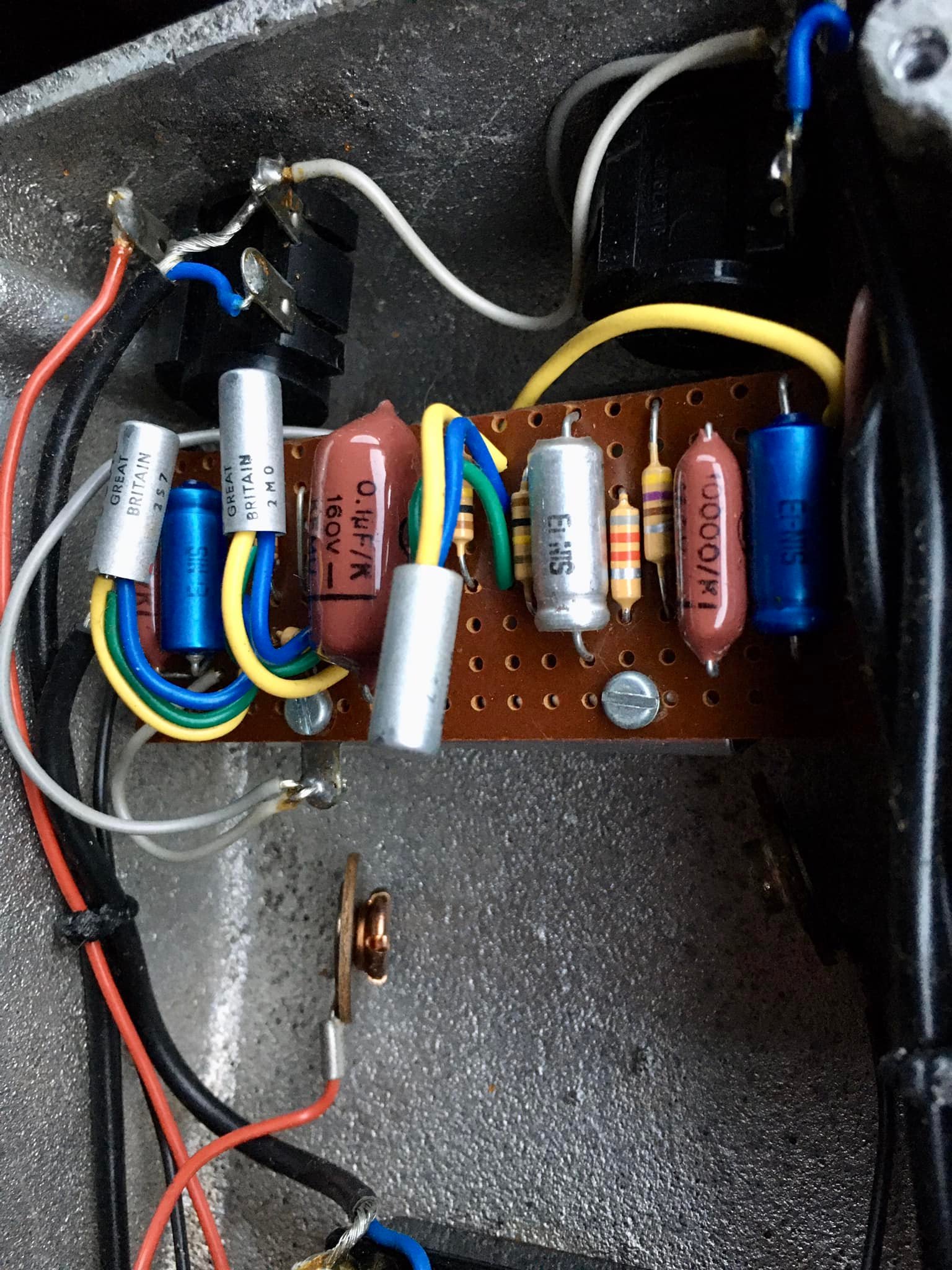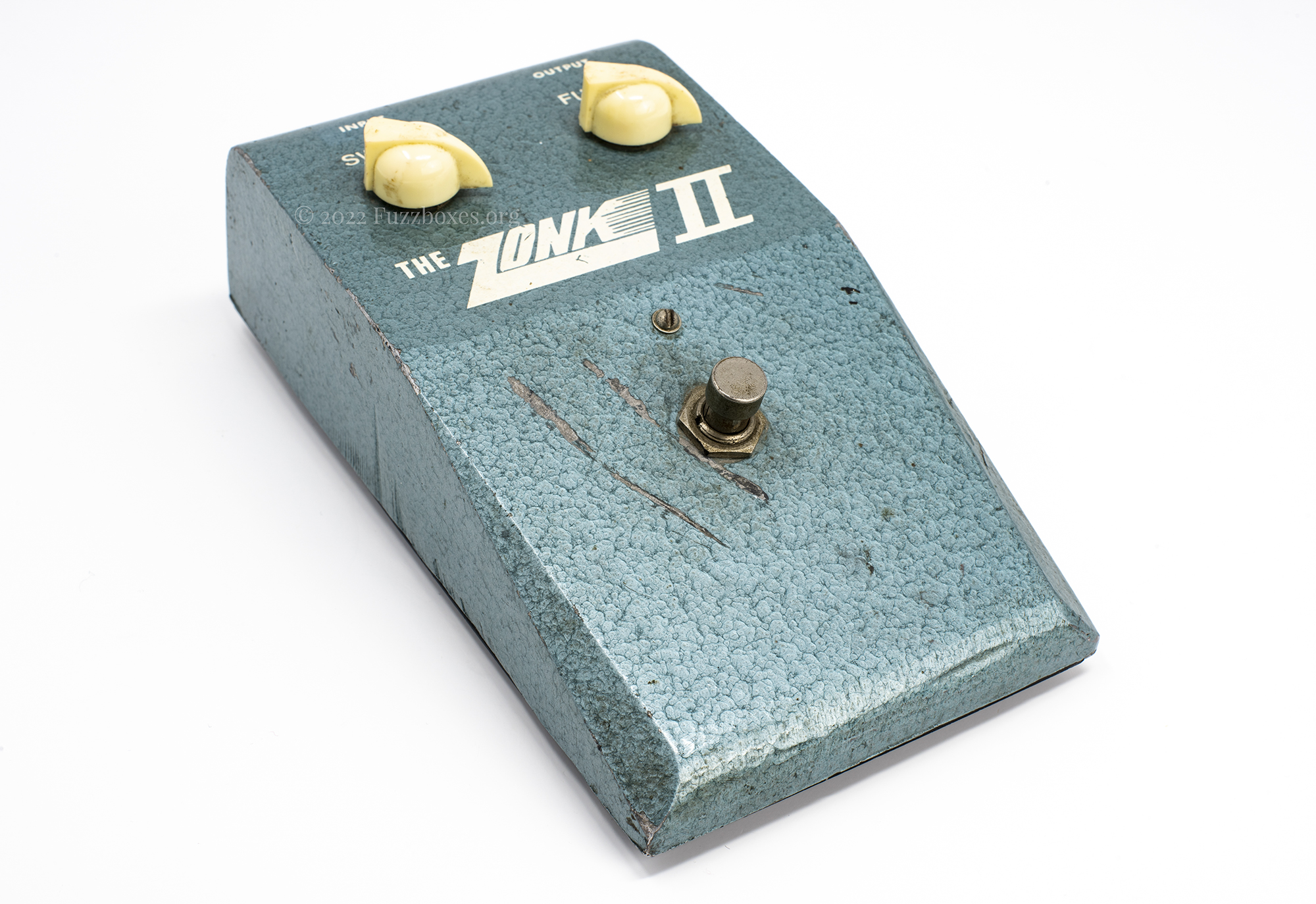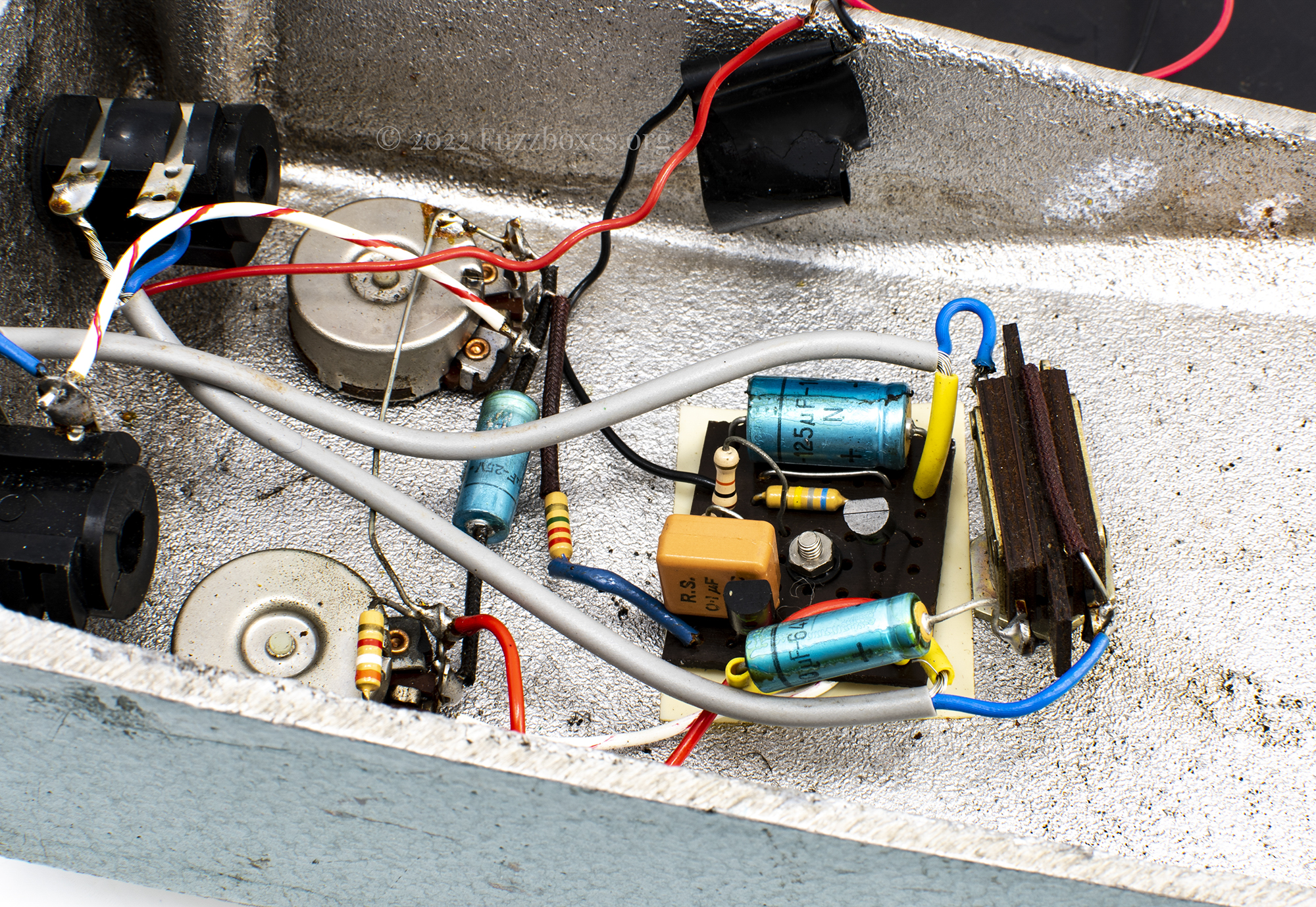Background
The Zonk II was a fuzz box that Hornby Skewes offered alongside the ZZ.1 ‘Zonk Machine’ during the period of approximately 1967 through to the early 1970s. An early advertisement (crudely dated ‘1967’ by its owner) describes the Zonk II as a “good quality Fuzz Box at a reasonable price”, and indeed, the Zonk II was priced considerably lower than the Zonk Machine.
The circuit inside Zonk II pedals evolved over the course of production. Zonk II pedals were initially built with various two and three-transistor circuits, using germanium transistors. By the 1970s, the Zonk II pedals featured a two-transistor circuit, using silicon transistors. Close inspection of surviving pedals reveals that the reason for the multitude of different versions of the same model came as a result of Hornby Skewes having outsourced the manufacturing of the Zonk II to several different builders.
Different versions
Unusual early Zonk II’s, c. 1967



Early versions of the Zonk II were housed in heavy-duty cast aluminium enclosures. These enclosures featured the same distinctive angular design, with tapered sides, as the early Marshall SupaFuzz pedals. Anecdotal evidence confirmed that this was not a coincidence, and that some early Zonk II fuzz boxes were in fact supplied to Hornby Skewes by Sola Sound, as the OEM.1
The pedals pictured above were likely both built in around 1967. The pedal on the left features a three-transistor circuit, which may be derivative of Hornby Skewes’ Zonk Machine; while the unit on the right was built with a germanium two-transistor fuzz circuit. Both pedals are, at time of writing, the only known surviving examples of their circuit type. (Photo credit: G. Green & J. Light)
Zonk II “Professional MKII”, c. 1968



Other early Zonk II’s were built by Sola Sound with identical sets of Tone Bender MKII electronics to the fuzz boxes that Sola Sound was already offering to companies like Marshall, Vox & Rotosound. The transistor configuration and the exact selection of parts reveals that the handful of known surviving Zonk II “MKII” fuzz boxes were not built before 1968. The pedal pictured above even has a date stamp on its bottom plate that supports this. (Photo credit: R. Green)
Zonk II (cast enclosure, with silicon transistors), c. 1969



Date codes stamped on the pots in the Zonk II pictured here reveal that these pedals were still being housed in their angular cast aluminium enclosures by 1969. Despite the fact that the angular enclosures were likely a Sola Sound design, the electronics in this 1969 version of the Zonk II circuit were actually assembled by a different company.
This latest revision of the Zonk II circuit featured two 2N4061 silicon transistors, and was built on stripboard. This silicon-transistor circuit was the circuit that would be used for the Zonk II until the model was finally discontinued during the 1970s. The selection of components & hardware, along with the general construction style, strongly indicates that these silicon-transistor stripboard Zonk II pedals were built by the same people who were already building Zonk Machines (and the various assorted other effects units) for Hornby Skewes.
Interestingly, these ‘transitional’ Zonk II’s (i.e. those built with silicon transistors, but housed in the earlier cast aluminium enclosure) have thus far only resurfaced in Italy.
Zonk II (folded aluminium enclosures), 1969-c. 1970s



By the early 1970s, the Zonk II transitioned from being housed in the distinctive cast aluminium enclosures, to a flimsier type of folded aluminium enclosure (similar to what was already being used for the Zonk Machine). The electronic circuits inside these newer casings initially remained unchanged, but construction on stripboard eventually changed over to a dedicated printed circuit board. (Photo credit: C. Nelson)
Branding on the track side of these PCBs reveals that the pedals were built for Hornby Skewes by Charlie Ramskir’s Wilsic Sound. Ramskir was already supplying Hornby Skewes with [Miles Platting] amplifiers during the 1970s, and Skewes recalled in a 2015 interview that Ramskir was involved with the production of Hornby Skewes fuzz boxes too.2 Wilsic Sound also offered a fuzz box under its own brand as well, which was visually very similar to the 1970s-era Zonk II.
The two-transistor circuit of the Zonk II would also feature as part of the more sophisticated Hornby Skewes Shatterbox pedal, which was built & sold concurrently, during the late 1960s through to the early 1970s. The Zonk II was finally discontinued at some point in the early-to-mid-1970s, having been replaced with a different range of effects pedals, supplied to Skewes by JEN in Italy.
Share your fuzz!
I welcome any comments, feedback, queries & corrections in relation to the Fuzzboxes.org project. Please get in touch via this contact form (or on the ‘contact‘ page).
Much of our understanding of the development of 1960s fuzz boxes comes from analysis of surviving pedals themselves, and so photos of pedals belonging to readers are particularly useful in furthering this research.
If you would like to contribute pictures of 1960s-era guitar effects to Fuzzboxes.org, then feel free to send in any pictures via the uploader below. Photos are greatly appreciated, and any submissions are not published on this website without advance agreement with the contributor.
- https://stompboxes.co.uk/forum/viewtopic.php?p=121032#p121032
- VintageGuitar.com, Hornby Skewes Zonk Machines, 2015 [https://www.vintageguitar.com/23068/hornby-skewes-zonk-machines]


Cool article! Do you know of any albums that used a Zonk II?
Not yet, I’m afraid!
The earlier Zonk II’s are definitely among the rarer and more obscure fuzz boxes from the 60s, and I’ve never even seen a period photo of one yet. The later Zonk II pedals were definitely built in larger numbers (and, like the other JHS effects, they were probably also sold a lot in Canada) during the 1970s, but they also have a very unremarkable sound and so they’re especially difficult to pin-point on a recording. Also not seen any photos yet of groups using pedals that could positively be ID’d as a later Zonk II…